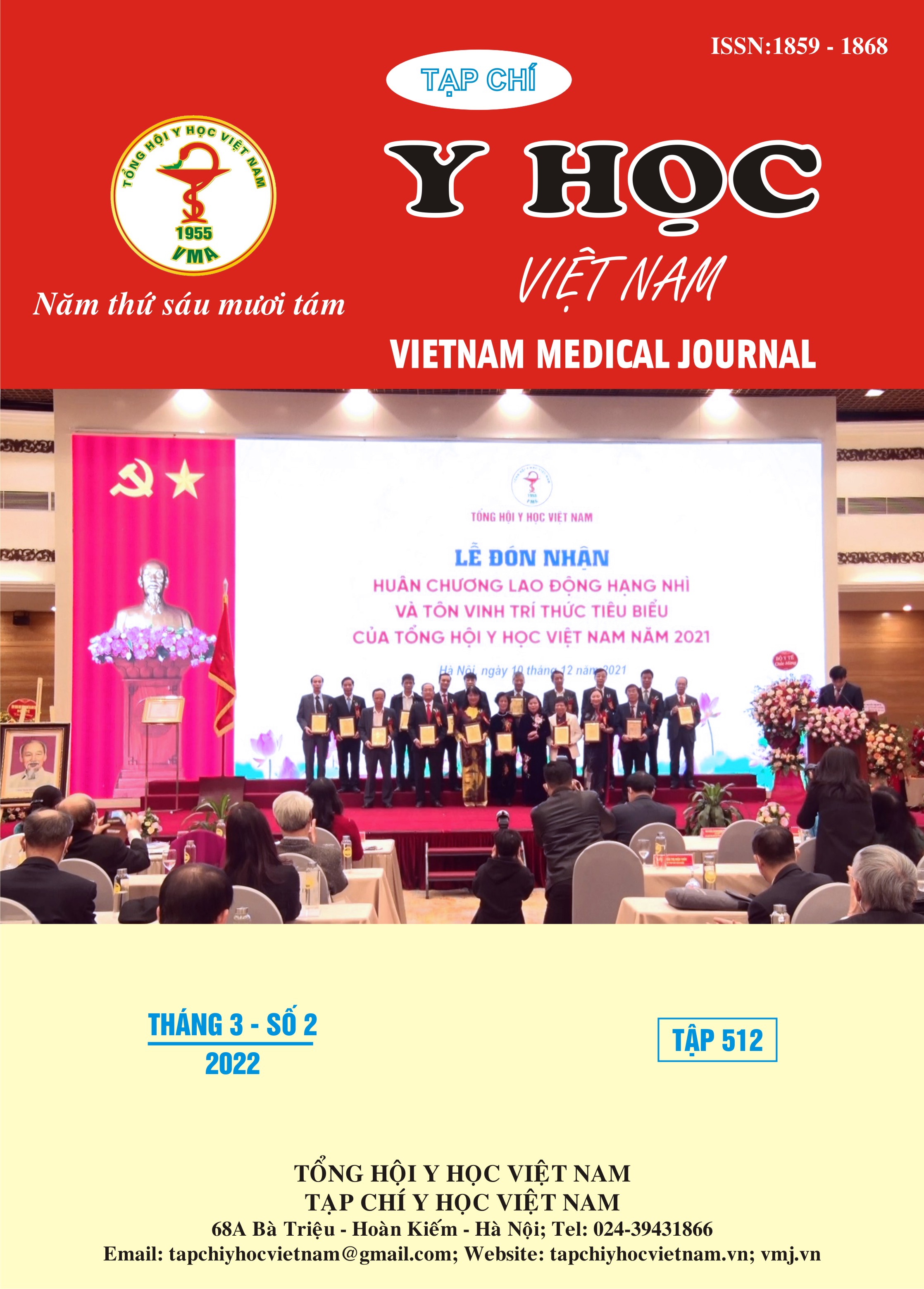THE OUTCOME OF BEVACIZUMAB
Main Article Content
Abstract
Objectives: To evaluate the effectiveness of bevacizumab in PCV treatment. Patients and methods: interventional study without control on foveola or para-foveola PCV at vitreo-retinal department, VNIO from 10/2013 to 2/2020. Results: 11 eyes were recruited with mean injections of 4.55±1.57 (3-6 injections). The VA improvement was insignificant after 6 months of follow-up. Mean VA increase was most remarkable at month 1 after the first injection. Mean VA improvement was most significant at month 5 (p< 0.05). Similarly, good VA outcome was seen only in 1 eye. VA remained unchanged or deteriorated in majority of cases (6 eyes – 54.5%). 4 eyes got stable vision. The mean retinal thickness was insignificantly reduced. The overall outcome was graded as good in 1 eye, moderate in 3 eyes (27.3%) and mediocre in 63.4%. Conclusion: treatment with bevacizumab intraocular injection for para-foveola and foveola PCV bought low rate of VA improvement, insignificant retinal thickness reduction and moderate overall success (36.4%).
Article Details
Keywords
PCV, bevacizumab, central retinal thickness
References
2. Ap C., Im D., and La Y. (2002). Polypoidal choroidal vasculopathy. Ophthalmol Clin N Am, 15(4), 537–554.
3. Chaikitmongkol V., Cheung C.M.G., Koizumi H., et al. (2020). Latest Developments in Polypoidal Choroidal Vasculopathy: Epidemiology, Etiology, Diagnosis, and Treatment. Asia-Pac J Ophthalmol Phila Pa, 9(3), 260–268.
4. Yannuzzi L.A., Ciardella A.P., Spaide R.F., et al. (1998). The expanding clinical spectrum of idiopathic polypoidal choroidal vasculopathy (IPCV). Retinal Pigment Epithelium and Macular Diseases. Springer Netherlands, Dordrecht, 173–183.
5. Cho HJ, Kim JW, Lee DW, et al. (2012). Intravitreal bevacizumab and ranibizumab injections for patients with polypoidal choroidal vasculopathy. Eye, 26, 426–433.
6. Nakashizuka H., Mitsumata M., Okisaka S., et al. (2008). Clinicopathologic findings in polypoidal choroidal vasculopathy. Invest Ophthalmol Vis Sci, 49(11), 4729–4737.
7. Cho H.J., Baek J.S., Lee D.W., et al. (2012). Short-term effectiveness of intravitreal bevacizumab vs. ranibizumab injections for patients with polypoidal choroidal vasculopathy. Korean J Ophthalmol KJO, 26(3), 157–162.
8. Wakabayashi T., Gomi F., Sawa M., et al. (2012). Intravitreal bevacizumab for exudative branching vascular networks in polypoidal choroidal vasculopathy. Br J Ophthalmol, 96(3), 394–399.


